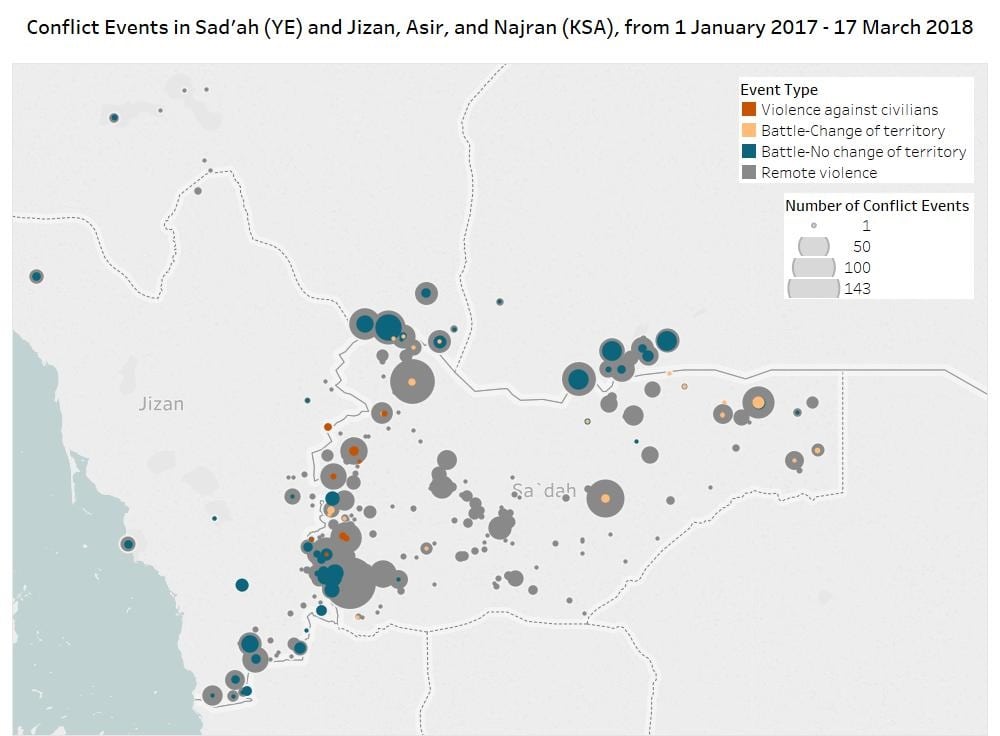Historically the home to a powerful Zaydi dynasty and more recently the birthplace of the Houthi insurgency, Yemen’s northwestern governorate of Sa’dah has long managed to defy government control and has borne the brunt of the Saudi-led coalition’s aerial campaign throughout much of Yemen’s most recent civil war. The current conflict in Sa’dah pits armed forces loyal to the government of President Hadi, UAE-backed Salafist militias and Saudi troops against an unconventional opponent, the Houthis, typically organised around small groups of fighters. The nature of conflict within Sa’dah largely consists of air and artillery strikes carried out by the Saudi air force and border guards, with an increasing number of battles as pro-Hadi forces advance into Houthi-controlled territory.
Since 1 January 2017, ACLED has collected reports on over 1,200 airstrike events in Sa’dah, inflicting hundreds of reported civilian fatalities and severely damaging public and private infrastructure. Despite the heavy airstrikes, Houthi militias in Sa’dah have managed to use the rugged terrain along the northern border of the province to wage frequent attacks against military positions and civilian populated areas in Saudi Arabia’s southern governorates of Jizan, Najran and Asir. Although the results of such cross-border attacks are often mixed – several missiles are reported to have been intercepted by the Saudi aerial defence system – ballistic missile strikes and incursions into Saudi territory remain key to the Houthi’s military strategy. The figure below depicts remote violence (e.g. airstrikes) as well as battles (e.g. attacks against military positions) in the Yemeni Sa’dah and the Saudi Jizan, Asir, and Najran regions.
In recent months, pro-Hadi forces with air and ground support from the Saudi-led coalition have recaptured several areas in the remote border districts of Baqim, Kitaf Wa Al-Boqee, Monabbih and Razih, marking a new push by government forces to wrest Sa’dah from Houthi control. Military operations have accelerated since December 2017, after the collapse of the Houthi-Saleh coalition and the death of former president Saleh. Despite these latest territorial gains, Houthi entrenchment in the area will likely make any further advancements extremely difficult.
Find an explanation of ACLED’s methodology for monitoring the conflict in Yemen here.







